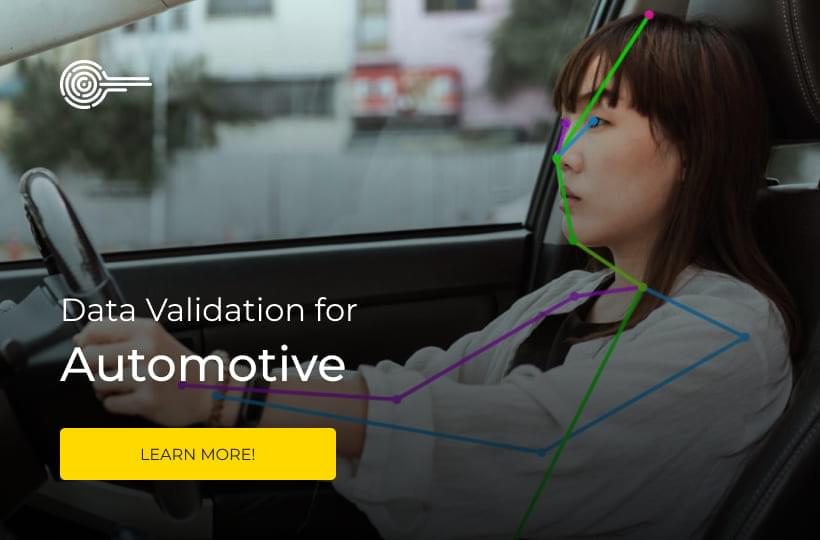Using Synthetic Scenarios for Model Validation and Stress Testing

Model validation and stress testing have become essential in modern data-driven decision-making in various industries, from finance to autonomous systems. As models grow in complexity and are deployed in high-stakes environments, assessing their reliability under diverse and unpredictable conditions becomes even more critical. One method that has emerged to support this assessment is using synthetic scenarios, which simulate potential real-world situations without relying solely on historical data.
Synthetic scenarios are gaining popularity as complementary to traditional model testing methods. These scenarios can be adapted to explore edge cases, rare events, or hypothetical conditions that may be underrepresented in existing data sets. Although their implementation requires careful design and understanding of the modeled system, their potential to reveal weaknesses or blind spots in the model makes them an increasingly valuable asset for ensuring reliability and performance.

What Are Synthetic Scenarios?
Synthetic scenarios are intentionally created situations or data environments that mimic real or hypothetical conditions to test, validate, or analyze models. Unlike traditional test cases, which rely on historical or observed data, synthetic scenarios are generated artificially, often through simulations, statistical methods, or rule-based designs. Their purpose is to represent situations that are rare, extreme, future-oriented, or simply underrepresented in existing data sets.
These scenarios can take different forms depending on the subject area. In financial modeling, they can represent sharp market downturns or liquidity crises. In climate modeling, they can represent possible but extreme weather events. In machine learning, synthetic inputs can be designed to test the sensitivity of a model to noise, outliers, or unfamiliar patterns. The value of synthetic scenarios lies in their flexibility: they allow researchers and engineers to explore a broader range of conditions than are typically available in real-world data, helping to identify vulnerabilities and improve model reliability.
Importance of Synthetic Data
Synthetic data is crucial in modern analytics and machine learning, especially when real data is limited, confidential, or challenging. It is artificially generated information that mimics real data's statistical properties and structure without revealing the actual records. This makes it particularly valuable in situations with privacy, compliance, or scarcity issues.
In addition to confidentiality, synthetic data is essential for increasing model robustness and fairness. It allows you to create balanced datasets, model rare edge cases, and generate input for scenarios that have not yet occurred but are plausible. This expands the scope of model training and testing, helping developers identify blind spots and improve generalization. As AI systems increasingly operate in high-stakes environments, synthetic data provides a practical, secure, and scalable way to improve performance and reliability.
Differences Between Synthetic and Real Data
Real data is collected from actual events, behaviors, or interactions. It reflects what happened and usually comes from sensors, transactions, surveys, or logs. It is grounded in reality but is often ambiguous, incomplete, or restricted by privacy rules. Real-world data reflects the natural variability and complexity of the world, which is valuable for building accurate and relevant models. However, it may be limited in representing rare or future scenarios.
On the other hand, synthetic data is generated artificially using algorithms, simulations, or statistical models designed to mimic the characteristics of real data. They do not correspond to real people or events but aim to preserve the original data's structure, correlations, and distribution patterns. This makes them particularly useful when real data is unavailable, unbalanced, or confidential. However, because synthetic data is created based on assumptions and modeling choices, it may lack some of the nuances of unpredictability found in real data. It must be carefully reviewed to avoid bias or oversimplification.
The Role of Model Validation
Model validation evaluates whether a predictive or analytical model works properly and produces reliable, accurate results in different situations. Its main goal is to ensure that the model fits the data on which it was trained and generalizes well to new, unknown data. Validation is essential for identifying problems such as overtraining, data leakage, or unrealistic assumptions that can lead to model failure in real-world applications.
Model validation often involves comparing predictions to known results using test sets, cross-validation methods, or performance metrics such as accuracy, precision, or root mean square error (RMSE). However, it can also go beyond standard metrics by introducing stress scenarios or robustness checks, where synthetic scenarios become particularly useful.
Key Components of Effective Validation
Good model validation is more than verifying that a model makes accurate predictions. It involves a structured approach to testing reliability, fairness, and robustness. A well-designed validation process helps identify weaknesses early on, ensures that the model is fit for purpose, and supports regulatory or operational standards in industries such as finance, healthcare, and engineering.
Good validation is based on several key components:
- Assessment of data quality. Ensuring that the input data used for validation is clean, relevant, and representative of the real world.
- The strategy of division and sampling. Use appropriate methods, such as cross-validation or time-based split, to assess generalizability without bias.
- Performance metrics. Select the right metrics (e.g., accuracy, precision, completeness, standard deviation, area under the curve) that reflect the model's goals and context.
- Stress testing and edge cases. Introduce rare or extreme scenarios, including synthetic data, to investigate model robustness.
- Bias and fairness checks. Examine the model for potential discriminatory behavior or performance gaps between subgroups.
- Interpretability and explainability. Understanding why the model makes specific predictions promotes transparency and trust.
- Benchmarking. Comparison with baseline models or industry standards to measure relative performance.
Regulatory Requirements
In many industries, especially finance, healthcare, insurance, and critical infrastructure, regulators require that predictive models undergo formal validation and documentation before deployment. Common regulatory frameworks include validating the model using a variety of datasets, testing for bias or discrimination, and maintaining clear audit trails. In this context, synthetic scenarios and synthetic data are valuable tools to meet requirements that involve testing situations not well represented in historical data. By proactively validating models against regulatory standards, organizations mitigate legal and operational risks and build more robust systems.

Stress Testing Explained
The goal is not to see how well the model performs under normal circumstances but to understand its limitations, vulnerabilities, and points of failure when exposed to challenging scenarios.
In practice, stress testing often involves using synthetic scenarios that represent unlikely but plausible situations, such as a sudden market crash, a sharp increase in user traffic, or very unusual combinations of inputs. These tests help developers and stakeholders assess the model's resilience and stability and can guide them to make improvements in model design, backup strategies, and risk mitigation.
Benefits of Using Synthetic Scenarios
- Coverage of rare and extreme events. It allows you to test situations absent or underrepresented in historical data, such as crises or unusual edge cases.
- Improved model stability. It helps identify weaknesses or points of failure, leading to better and more reliable model performance in various conditions.
- Safe testing environment. It allows you to conduct experiments without giving real users access, violating privacy laws, or using confidential information.
- Regulatory support. Assists in meeting compliance requirements by demonstrating how the model behaves in stressful or atypical scenarios.
- Scalability and repeatability. Synthetic scenarios can be generated and reused throughout test cycles, making validation processes more efficient and consistent.
- Improved innovation. Encourages the exploration of hypothetical or future conditions, which can contribute to long-term planning and risk management.
- Analysis of bias and fairness. Allows for controlled testing of model behavior in various constructed environments, helping to identify and correct potential biases.
Cost-Effectiveness
One significant advantage of using synthetic scenarios is their cost-effectiveness. Generating synthetic data or scenarios is often much more affordable than collecting real-world data, especially when the data is limited, difficult to obtain, or expensive. For example, in industries such as finance or healthcare, gaining access to complex datasets can require significant resources, including data collection, cleaning, and privacy costs.
In addition, synthetic scenarios provide more efficient testing and validation because they allow for rapid iteration and experimentation without the logistical challenges associated with real data. Additionally, because synthetic data is flexible and customizable, it can be generated to meet specific testing needs, which helps avoid unnecessary data collection or over-testing.
Developing Synthetic Scenarios
Synthetic scenario development involves creating artificial datasets or situations that mimic real-world conditions to test the behavior of a model under different conditions. This process is typically driven by the need to capture rare, extreme, or otherwise underrepresented scenarios in real-world data. Developing these scenarios requires careful planning, subject matter expertise, and an understanding of the modeled system. Here is a brief description of the steps:
- Identify the key variables. Identify the critical variables and model parameters that need to be tested. These may include factors such as market conditions in finance, sensor readings in autonomous vehicles, or user behavior in a web application.
- Model data generation. Use simulations, algorithms, or statistical methods to generate synthetic data. This may include random sampling, perturbing existing data, or applying rules specific to the subject area to create realistic variations that mimic real-world patterns.
- Introduce extreme and boundary cases. Develop scenarios that go beyond typical conditions. This includes stress tests, such as financial collapses, natural disasters, or unexpected system failures that can reveal model vulnerabilities.
- Ensure representativeness. Although the scenarios are synthetic, they should reflect plausible real-world conditions, ensuring their usefulness in testing the model's response.
- Verify and refine. Once synthetic scenarios are developed, they must be validated to reflect the conditions intended to simulate accurately.
- Iterate and scale. Developing synthetic scenarios is often an iterative process. As models evolve, new boundary cases and conditions may need to be explored, requiring the synthetic scenarios to be updated and scaled.
Challenges and Limitations
- Realism and accuracy. One of the biggest challenges is ensuring that synthetic scenarios accurately reflect real-world conditions. If the generated data or scenarios are too simplistic or based on incorrect assumptions, the model may perform well in synthetic tests but not real-world situations. Striking a balance between complexity and realism can be difficult, especially in highly dynamic or unpredictable environments.
- Bias and over-customization. Synthetic data can inadvertently introduce biases or over-represent certain conditions that do not reflect the real world. For example, suppose synthetic scenarios are overly influenced by assumptions or limited to specific data types. In that case, the model may become overly tuned to those conditions, resulting in over-tuning and poor generalization when exposed to real-world variability.
- Computing resources. Generating synthetic data or scenarios, especially complex ones, can require significant computing resources. Large-scale simulations or complex data generation processes can become resource-intensive, especially if the scenarios must be updated or refined frequently.
- Lack of historical validation. Because synthetic scenarios are hypothetical, there is often no historical data to verify their accuracy. While they can be handy for stress testing and edge case studies, there can be uncertainty about how accurately they reflect future or rare events.
- Subject matter expertise is required. Developing practical synthetic scenarios often requires in-depth knowledge of the subject matter to ensure they are meaningful and relevant. Without a deep understanding of the modeled system or environment, the generated scenarios may not consider the actual risks or challenges the model will face in practice.
- The limited scope of scenarios. While synthetic scenarios can cover a wide range of conditions, they are still limited by the creativity and assumptions of the developers. It may not be easy to anticipate every possible edge case or rare event, which means there may still be situations for which the model is not prepared.
- Regulatory and ethical issues. In some industries, synthetic data or scenarios may face regulatory scrutiny, especially if it is unclear how these synthetic datasets comply with privacy laws or industry standards. Ethical considerations may also arise when creating scenarios that simulate sensitive situations, such as healthcare or finance.
Summary
Synthetic scenarios are valuable tools for model validation and stress testing. They allow models to be evaluated under extreme, rare, or hypothetical conditions that may not be represented in real-world data. By simulating a variety of situations, synthetic scenarios help identify potential weaknesses and ensure that the model is robust, adaptable, and reliable in a wide range of environments.
However, developing practical synthetic scenarios is fraught with challenges, including ensuring their realism, avoiding bias, and managing the computational resources required to generate them.
FAQ
What are synthetic scenarios in finance?
Synthetic scenarios are artificially created data sets. They use advanced algorithms, including Gen AI and Quantum Computing. These scenarios aim to mimic a wide range of financial conditions and events, even those not seen in historical data.
How do synthetic scenarios differ from real data?
Synthetic scenarios differ from real data in several ways. They offer better privacy, as they don't include actual customer info. They are also more scalable, allowing for the creation of large data sets to model rare events.
What is stress testing in finance?
Stress testing is a risk management technique that assesses how financial institutions or portfolios would perform under extreme yet plausible economic scenarios.
What are the benefits of using synthetic scenarios in financial modeling?
Synthetic scenarios in financial modeling offer several benefits. They provide flexibility in scenario design and are cost-effective compared to real-world data collection. They enhance risk assessment capabilities and preserve privacy.
What are the potential challenges or limitations of using synthetic scenarios?
Synthetic scenarios offer benefits but also come with challenges. Ensuring the quality and representativeness of synthetic data is crucial. Maintaining consistency with real-world patterns and addressing potential biases in data generation is also key.

